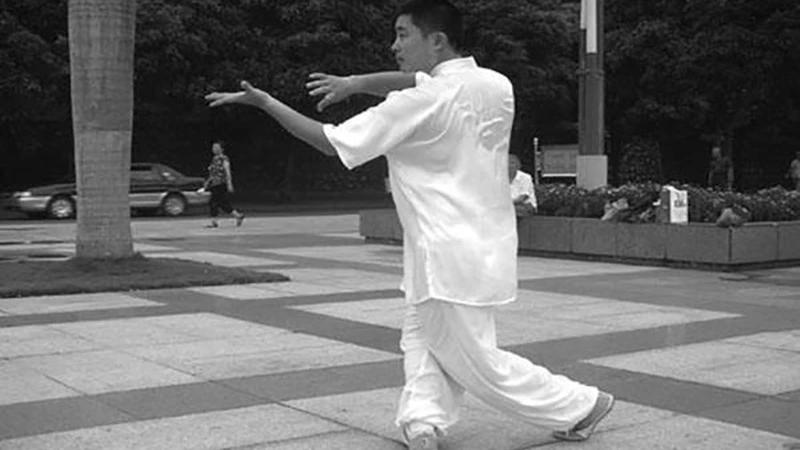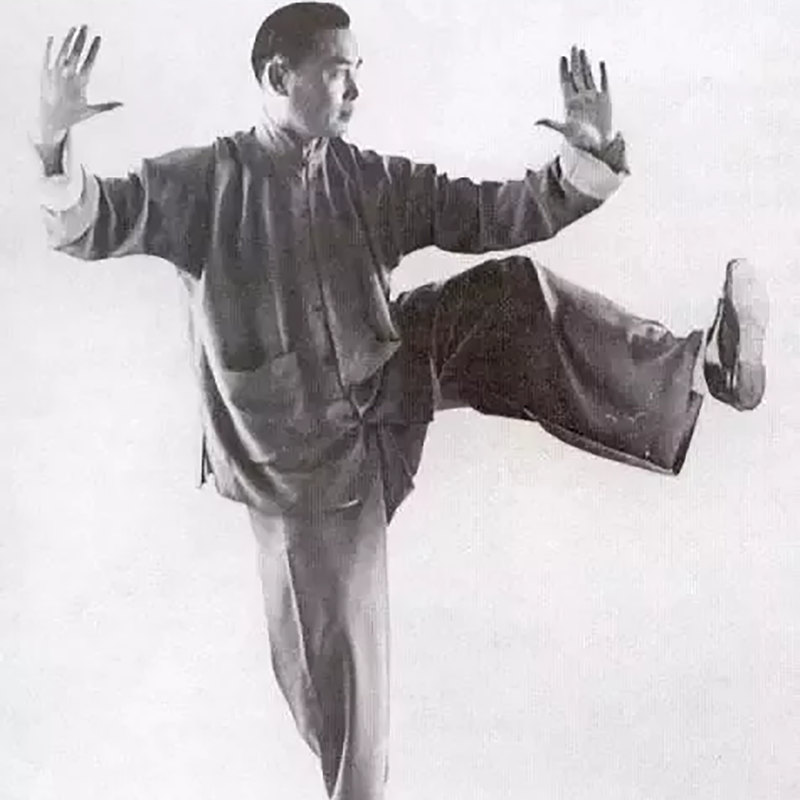On screen, Tai Chi often looks like a dance of serenity—a graceful blend of hard and soft, movement and stillness. The slow, deliberate motions of Tai Chi masters convey a sense of calm and control that seems almost otherworldly. For many, Tai Chi remains a mystery, a distant echo of Chinese martial arts. Yet, in Jiangyin, a city nestled in Jiangsu Province, this ancient practice is quietly thriving, thanks to the efforts of dedicated practitioners like Zuo Gangping (左刚平).
Zuo Gangping, a leading figure in the promotion of Tai Chi in Jiangyin, is more than just a practitioner; he is a bridge between the past and present. As the president of the Yang Style Tai Chi (杨式太极) Association in Jiangyin and a disciple of Master Zhao Youbin (赵幼斌), the fifth-generation heir of the Yang Style Tai Chi lineage, Zuo Gangping embodies the seamless fusion of traditional martial arts and contemporary health practices.

From External to Internal Martial Arts
Zuo Gangping's journey into the world of martial arts began at a tender age. At just nine years old, he started learning Shaolin Kung Fu under a local master. His military service introduced him to systematic combat training, further deepening his connection to martial arts. Despite his early exposure to external martial arts, Zuo Gangping's understanding evolved as he approached his thirties. He realized that his physical conditioning was better suited for internal martial arts, which focus more on internal energy and balance rather than external force.
In 2007, a serendipitous encounter led him to Yang Style Tai Chi, a decision that would profoundly impact his life. The Yang Style, known for its smooth, flowing movements and emphasis on internal strength, became the focus of his practice. Zuo Gangping immersed himself in the study of Tai Chi, guided by the principles of this esteemed martial art. His journey reflects a broader trend where individuals seek not just physical fitness but also a deeper connection to traditional wisdom.
The Essence of Tai Chi
Tai Chi is not merely an exercise; it is a holistic practice that integrates martial skills, medical benefits, philosophy, and art. Its origins can be traced to the ancient Chinese concepts of Yin and Yang and traditional Chinese medicine. By harmonizing breathing techniques and postural alignment, Tai Chi enhances energy flow, supports cardiovascular health, and improves overall well-being. It is particularly beneficial for those with chronic ailments and those in the "grey zone" of health.
Zuo Gangping practices Yang Style Tai Chi, which originated in Guangping (广平府) Prefecture, Henan Province. Founded by the legendary Yang Luchan (杨露禅), the Yang Style has evolved through generations, with Yang Chengfu (杨澄甫), Yang Luchan's grandson, formalizing its structure and techniques. Despite the diversity of Tai Chi styles—such as Chen (陈氏) and Wu (吴氏)—Zuo Gangping believes that the underlying principles are universal. Tai Chi's ability to bridge the gap between physical techniques and philosophical understanding is what makes it unique.
Zuo Gangping emphasizes that Tai Chi's true power lies not in its physical techniques alone but in its ability to impart wisdom and influence one's worldview. The practice teaches a profound lesson in balance and harmony, guiding practitioners to navigate the interplay between force and softness, action and stillness. It offers a pathway to inner peace, allowing individuals to quiet their minds and ease their worries.
Niche Practice to a Community Movement
In Jiangyin, Tai Chi has moved beyond being a practice reserved for the elderly to becoming a popular activity embraced by people of all ages. As the city experiences economic and cultural growth, the demand for health and wellness activities has surged. Tai Chi fits perfectly into this trend, offering both physical and mental benefits that resonate with a wide audience.
Despite its growing popularity, Tai Chi still faces misconceptions. The long learning curve and abstract principles can be daunting for newcomers, particularly the younger generation. Many see Tai Chi as an activity suited only for older adults, overlooking its benefits for people of all ages.
Zuo Gangping is determined to change this perception. His mission is to make Tai Chi accessible and appealing to younger generations and children, turning it into a truly universal practice. By promoting Tai Chi across different age groups and integrating it into the cultural fabric of Jiangyin, he hopes to ensure that this ancient tradition continues to thrive in the modern world.
Through his efforts, Tai Chi is not only preserving a valuable cultural heritage but also adapting it to the needs of contemporary society. Zuo Gangping’s work exemplifies the dynamic interplay between tradition and innovation, ensuring that Tai Chi remains a vibrant part of Jiangyin’s cultural landscape.


